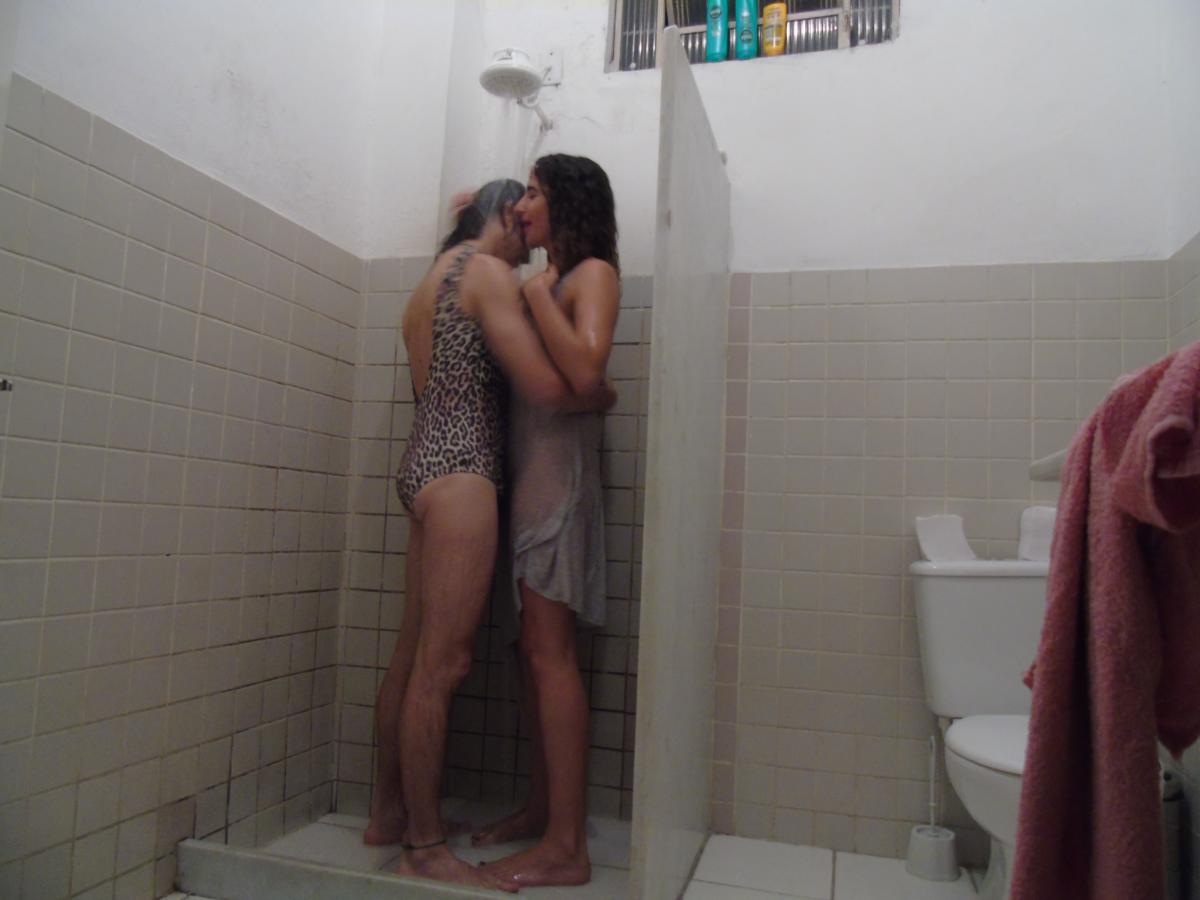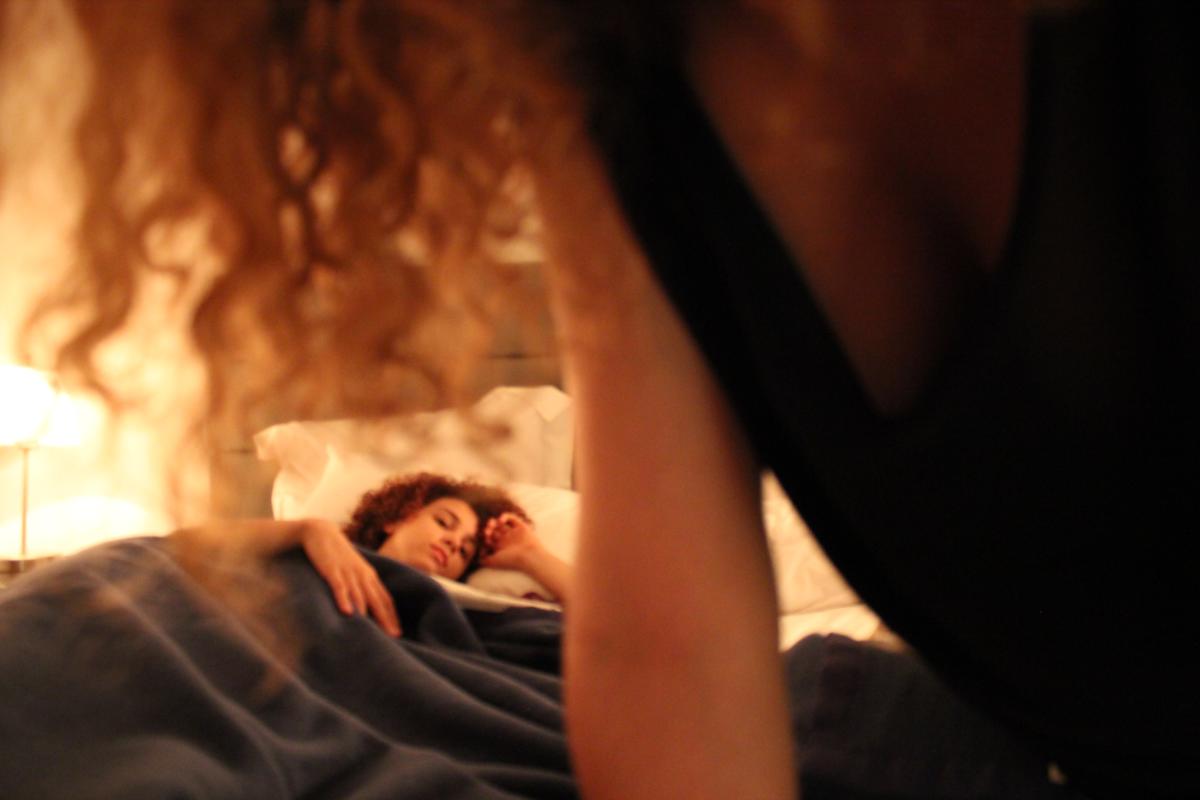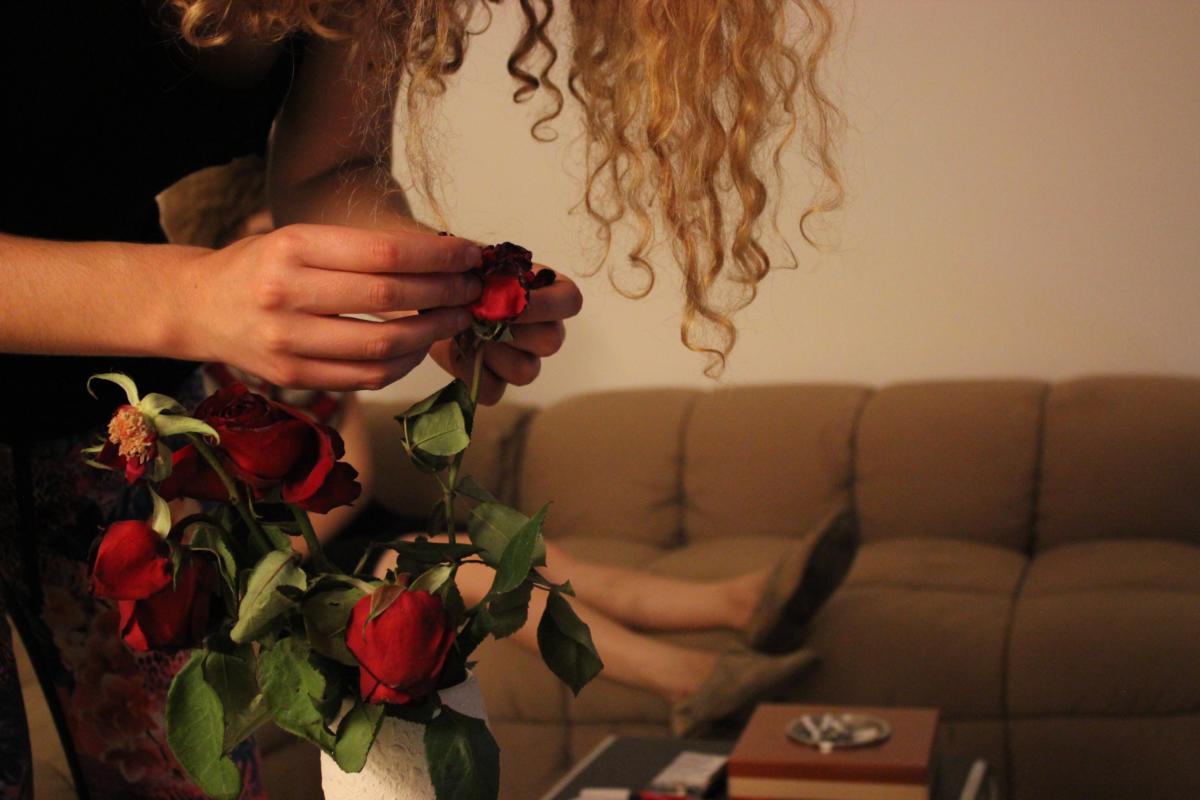
Did you collect things as a child?
Actually I have never collected anything, never owned a collection of objects. However as it turn out during the research for my second project – the Collection of Collectors – I was always interested in collecting people. At my parent’s house I discovered a very old agenda, an address log from when I was 10 years old. When I opened it I realised I did not put the telephone numbers or addresses next to the letters of the alphabet. Instead I just wrote the name of the person and all I knew about him or her.
And how collecting became topic of your artistic work?
It all started in 2009. In a garbage bin on the street of Lisbon I discovered a box full of letters. It turned out to be a corespondency between daughter and her parents form the period between 70s and 90s. It was transpacific exchange between Portugal and Bolivia. I took it and read all the letters, every 650 of them. With another Portuguese artist Tiago Cadete we decided to create a piece basing on this material. The questions appeared: how to organise this personal information – all the things that happened, the stories, the people? How to use this archive of a personal life as a base of an art piece? How to perform this kind of data?
How did you approach the topic?
We were interested in how powerful writing letters is, especially now, in times of social media. We researched different methodologies of organising the information. Very important component of my work is how to visualise the stories, collections and archives. Because this is what collecting actually is: an act of accumulating objects and organising it in space. We knew we had to create the stage setting. Since those letters were airmail, we created 650 bags filled with air each with one letter inside. I work with performance so we also had to embody the stories somehow. We performed the letters by making Skype conversations based on their content.



In this case you worked on someone else’s collection. How did you start creating your own collections?
Collection of Lovers was first. It was more of a process than just an idea. I was 24 when I traveled to Brazil, at first just for some time but I ended up staying there for 7 years. Portugal was going through political and economical crisis at the time and I did not have a job there, so I decided to stay. I was not prepared to be an immigrant. It was a very intense experience, however same language is spoken in both countries they are actually very different.
I was stunned how fast an intimate situation can be created and I realised I needed it. In the beginning I did not thought of it as a collection.
There is an ocean in between.
Yes and it actually mattered a lot: I was physically far away from my home country, I could not just go back at any moment. It made me question what home actually is. One day I met a stranger. We talked for a while and I said I wanted to visit his home, take pictures of it and find out whether I can sense what home means from this experience. Or whether I can fake the feeling of a home. I ended up spending 16 hours with him and his boyfriend. I was stunned how fast an intimate situation can be created and I realised I needed it. In the beginning I did not thought of it as a collection.
But it was?
Since I was making my MA on the topic of a collection soon it made sense it is also another one. I was wondering how can I capture what is ephemeral about those meetings. Art helps facilitate and quicken meeting the other. The frame of the art piece make us talk directly about what is intimate or important. Sometimes it does not work or is hard but in many cases it is very powerful. Maybe it is something I learned in Brazil: people are very straightforward there. In Europe we experience relative prosperity, we are used to certain quality of life and sometimes we complain and worry about completely unimportant things. In Brazil there are so many problems that people actually focus on what is important. It made me rethink my life.
Collecting objects and people are not that different?
Every collection has something ephemeral to it, without this personal, emotional approach collection is just a set of items. While working on the Collection of Lovers I realised I became a collector myself so I wanted to meet people who have the same passion. That is how the Collection of Collectors started. Actually my interested in collections was just an excuse to go into people houses and meet them.
What objects say about people?
Talking about objects turns out to be talking about one’s life. Collecting is a way of organising life in time: what is collected represents the past, you control the present by owning and gaining new objects and you go out into the future by planning new elements of the collection. Throughout those items so much is represented: places you visited, people you met, decision you made. Empty space represents what is ahead. Walter Benjamin wrote about it in his essay Unpacking My Library, which became one of the inspirations for my work. Of course objects have a capital value, bu what is really important and interesting are the emotions and memories bound to the items. I met collectors and recorded the interviews with them. In the videos I never showed what they actually collect, because it was supposed to be about them. I wanted to go behind the collection and meet the people. Until now I have collected 34 collectors from different countries.



Every collection has something ephemeral to it, without this personal, emotional approach collection is just a set of items.
Do you recall any unexpected or unusual collections?
Of course I was expecting bizarre collections, but there were some which stunned me nevertheless. First person I met for the project had a very unusual passion: she collected flowers. There was a big garden with one species of flowers: camellias, 200 of them. She had them catalogued, named each of them, she crossed them and created new ones. I met also another collector of plants who collected bamboos and pines in his garden. It stunned me because I did not know people collected flowers and look how ephemeral it is! This woman waited all year for the moment when camellias bloom, she took pictures, flowers died and she waited again.
Did you find out why people collect things?
There were different discourses about the collections. One of the basic question was what the collectors imagine for the items in the future, after they die. Some told they wanted their children to continue the collection, some wanted to create a museum. On the other hand there were people who said that the collection was just their passion and it could be destroyed, thrown into the garbage afterwards. Some sold out the collection.
How do you select people who take part in your projects?
I do not select the participants, I am looking for different ages, genders, nationalities. In the Collection of Collectors I had a 3 years old girl who collected cars and the 92 year old woman with a giant set of matchboxes (600 of them in her personal museum). To be part of the Collection of Lovers people must be adults of course, my youngest lover is 17 and he actually brought the declaration of consent from his parents. My oldest lover is 83.
Why did you decide to use the word lovers?
Since it is an artistic project, fictionalising is a very important aspect of it. Take the title itself: it is quite provocative for a female artists to make this kind statement, the imagination goes wild. Of course this suspicion is resolved and participants and spectators soon know it is not about the sexual relationships – of course it also could be but it is not the purpose. In my collection I have a name of the lover, place, date, photo and the story, but I never display them together. In case of this project I really protect what happened between me and the lover and it works also as an artistic tool: spectators always want to know more. Like in case of the tv shows, I only show you the first episode. Spectators know those meeting took place but they will never know what actually happened and pictures prove almost nothing. Some people ask me wether what I tell is actually truth, whether I had all those meetings. I always say what is the difference? Does it really matter?


So there is this giant collection you have and artistic wise you use various tools to share it?
Yes. The main tool of my work is my body, my experiences. If I die this collection will cease to exists because it is dead without my narrative, my storytelling. This is why theatre is actually a very good tool even if it may seem otherwise. The piece is very simple: on stage there is me and the photographies. And of course the story, the first principle of the theatre. It turns out you can give life to the archive throughout the tools of the theatre. I have two versions of the performance – simple one is a conference (me and the projector) and another one, more theatrical.
The main tool of my work is my body, my experiences. If I die this collection will cease to exists because it is dead without my narrative, my storytelling.
There is also a book.
I did volume 1 with the first three years of the meetings. I numbered the lovers, there are two photos of each meeting, the name of the city and the dates. In the middle there is a text written by two lovers – who are artists – from Brazil and Portugal. It was coedited by the National Theatre in Lisbon. In Portugal there is an idea of bringing back the tv theatre, so we wondered how could it look like nowadays. It was actually very hard but also interesting. I am also in the process of making an exhibition but it requires a lot of money and time. I am planning to prepare little fake apartments on the stage and fake meetings will happen there. Somehow I want to shift the experience: from something real transposed into art to something artificial becoming an actual, real moment.
Your newest project is the Collection of Artists. Could you elaborate on this one?
Artist are also people – whom I collect – and they interest me personally: I want to know why we create and how did we end up deciding to be artists. It is a job, precarious but nevertheless I receive money for what I do. I wonder what kind of events or character traits make us become artists? Actually I believe all of us could be artists, it is only a question of having tools and will or want. I am not so much interested in the works themselves, I am interested in the life of the artist behind them. Another excuse to meet people.


How will this project differ from your other?
I do not want to use any digital media. I ask artists to invite me into their studios and during our meeting to pass me the moment of creation. I do not record it in any way, I only learn to embody it. I collect artists from different countries – I want to trace the differences and similarities – and we will premiere in September 2019. It is unclear how performance will look like. Same as in my other projects there will be a fixed structure but content will change in time as new people join in. I had already an experience with a musician, drummer from a big classical orchestra. He taught me first six notes of Carmina Burana. We met for four hours in the studio, I learned the fragment and also learned all about him while we talked. Here in Poland I am meeting Wojtek Ziemilski, who was my teacher and important person in my artistic life.
Do you feel artists are different from other people you worked with?
As I said I think we just made different choice along the way. My 4th collection is actually a Collection of Spectators: for every medium I use I collect the viewers. For example I asked them to send me the picture of the intimate moments they had while watching me on TV. I received around 300 pictures in one night. The film is on the internet so I continue to receive photos. In 2020 I plan to work on this material. On the other hand people frequently ask me: were are you in your projects? Well, I am also part of the collection. I made an archive in the process of creating and performing: I interviewed my team and they interviewed me. We edited the materials and I could put myself inside the collection.
Now I am also part of your collection. Which lover am I?
You are my 158th lover.
The project is implemented by the Cialo/Umysl Foundation and produced in the framework of the PERFORMING EUROPE 2020 project, co-financed by EU Creative Europe – apap project and Ministry of Culture and National Heritage.
Imprint
| Index | Raquel André Teresa Fazan |
